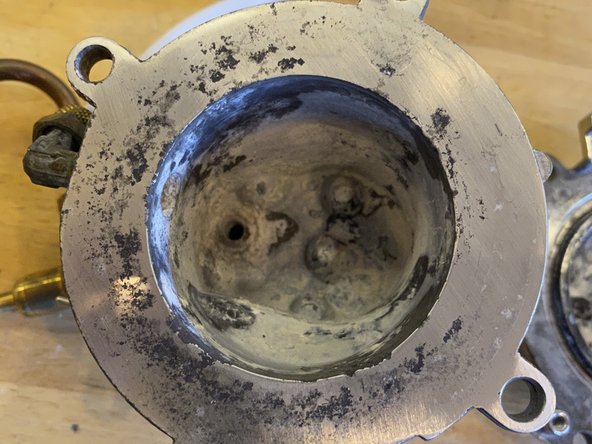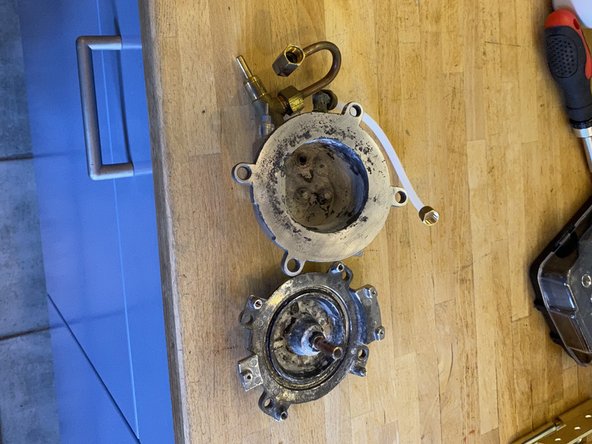crwdns2935425:05crwdne2935425:0






-
The insides were really covered with calcium carbonate (chalk)
-
I scrubbed out the inside of the unit, then I used an iron descaler product from a DIY store to remove the worst of the chalk
-
Don't submerge the top of the heater as it has electrical components on it
-
(OPTIONAL) With the scale removed, the pitting to the die-cast heater body was clear. I polished this by using a very fine wet-or-dry paper placed on a flat surface . Dampen the wet-or-dry, and using small movements smooth the top half of the heater. See photo 2.
-
Clean the inside of the bottom half of the heater. You can't use the same technique to celan the face of the bottom as it has a central spiggot.
-
Clean the hole which is at the bottom of the spiggot (from outside the heater). This allows hot water to come out of the heater, into the coffee. It should be 2.5mm in diameter (mine was not, hence the poor water flow), so I used a drill to clean this. The bullet shaped piece with the spring fits into this so make sure it is clean.
-
Reassemble this and the brass nut into the bottom of the unit, and reattach the water sieve.
-
See photo 3 for the completed clean faces.
crwdns2944171:0crwdnd2944171:0crwdnd2944171:0crwdnd2944171:0crwdne2944171:0